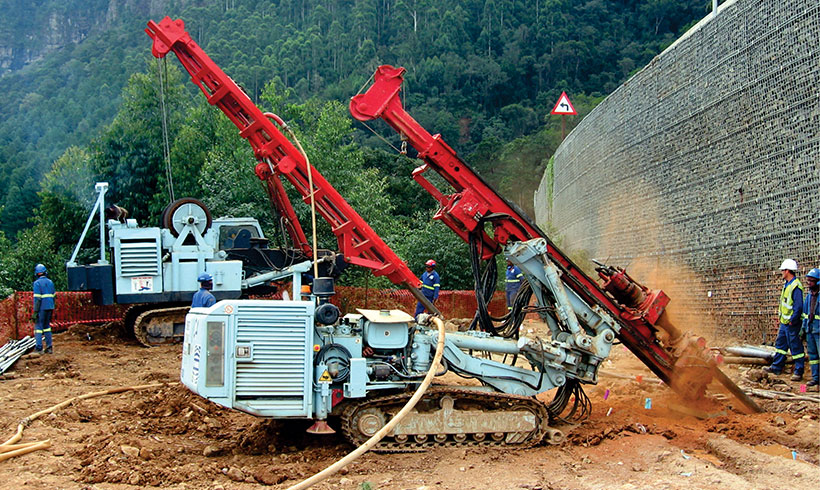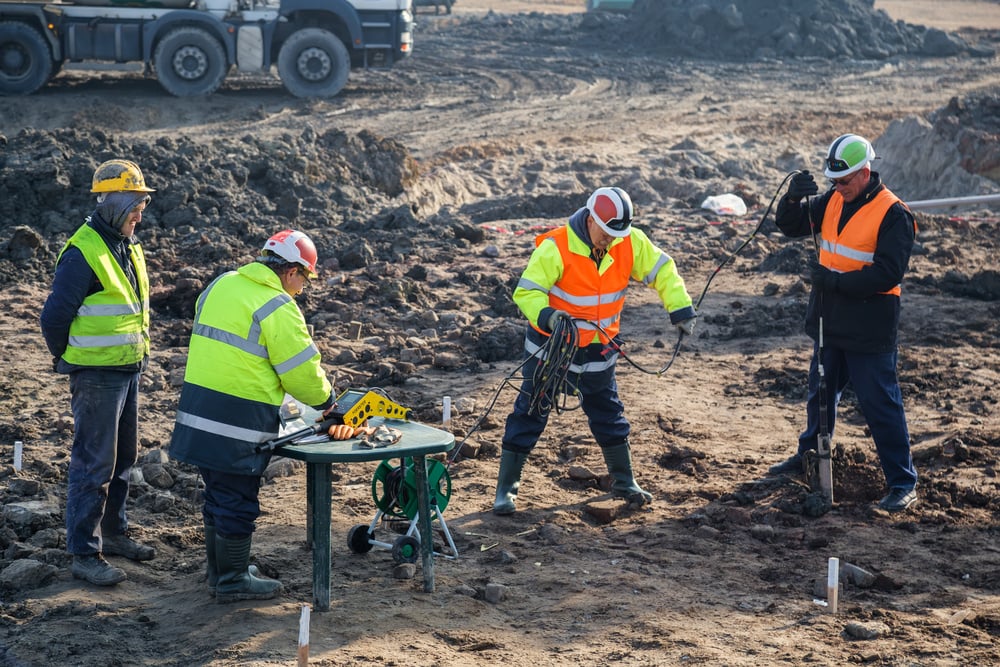The Ultimate Guide To Geotechnical Engineering For Construction Projects
The Ultimate Guide To Geotechnical Engineering For Construction Projects
Blog Article
Facts About Geotechnical Engineering For Construction Projects Uncovered
Table of ContentsThe Definitive Guide for Geotechnical Engineering For Construction ProjectsThe Main Principles Of Geotechnical Engineering For Construction Projects Not known Details About Geotechnical Engineering For Construction Projects The Greatest Guide To Geotechnical Engineering For Construction ProjectsThe Only Guide to Geotechnical Engineering For Construction ProjectsGetting The Geotechnical Engineering For Construction Projects To Work
These functions must be checked out by geotechnical designers to forecast their movements under numerous situations., making this analysis required.A geotechnical designer will examine dirt to figure out the bearing capability of the planet and suggest proper structure types, such as shallow structures, deep foundations like heaps, or specialized options like floating foundations for soft dirts. Recognizing the functions and activities of soil and rock, along with just how they communicate with constructions that have been erected on or within them, is just one of the primary descriptions for why geotechnical design is essential.
Environmental defense is completed through geotechnical design. Proficiency in air, water, and dirt quality maintenance is put to use by geotechnical engineers to lessen the adverse results of tasks.
To sum up, geotechnical engineering is an essential technique that maintains the durability and integrity of civil framework. Geotechnical engineers contribute to making building jobs efficient all over the globe by comprehending the behavior of planet materials and applying appropriate preparation approaches.
How Geotechnical Engineering For Construction Projects can Save You Time, Stress, and Money.
The fundamental stability of any task is critical. Geotechnical design plays a crucial duty in making certain that structures are constructed on solid ground, essentially and figuratively. By examining soil, rock, and subsurface problems, geotechnical engineers offer crucial insights that aid in the layout, building, and upkeep of buildings and framework.
Some Known Incorrect Statements About Geotechnical Engineering For Construction Projects
Research laboratory screening: Establishing the residential properties of dirt and rock. Several high-profile building and construction projects have effectively utilized geotechnical design to guarantee their stability and safety and security.

As a leader in geotechnical design, BECC Inc. is devoted to delivering innovative and efficient services that meet the highest possible requirements of high quality and safety. For more details on how BECC Inc. can support your following building project, call us today and allow us assist you improve strong ground.
William Rankine, an engineer and physicist, created an alternative to Coulomb's planet pressure concept. Albert Atterberg established the clay consistency indices that are still utilized today for dirt classification. In 1885, Osborne Reynolds identified that shearing causes volumetric extension of dense products and contraction of loosened granular materials. Modern geotechnical design is said to have actually begun in 1925 with the magazine of Erdbaumechanik by Karl von Terzaghi, a mechanical designer and geologist.
Not known Facts About Geotechnical Engineering For Construction Projects
Terzaghi additionally developed the framework for theories of bearing capability of structures, and the concept for prediction of the price of negotiation of clay layers due to loan consolidation. After that, Maurice Biot fully developed the three-dimensional soil combination theory, extending the one-dimensional design previously established by Terzaghi to much more basic theories and presenting the collection of fundamental equations of Poroelasticity.
Geotechnical designers examine and establish the properties of subsurface conditions and products.
The Only Guide to Geotechnical Engineering For Construction Projects
Geologic mapping and analysis of geomorphology are commonly completed in examination with a geologist or engineering geologist. Subsurface exploration generally involves in-situ testing (for instance, the common infiltration examination and cone penetration test). The excavating of examination pits and trenching (specifically for locating faults and slide planes) may likewise be utilized to discover dirt problems at deepness. , which utilizes a thick-walled split spoon sampler, is the most learn the facts here now common way to gather disturbed samples.

Usually, the interface's specific geometry is unknown, and a simplified user interface geometry is thought. Finite here inclines need three-dimensional designs to be examined, so most slopes are examined assuming that they are considerably wide and can be stood for by two-dimensional designs.
The Buzz on Geotechnical Engineering For Construction Projects
Developing the design based on a working hypothesis of behavior prepared for under the most potential conditions. Option of amounts to be observed as construction profits and determining their anticipated values based on the functioning hypothesis under the most unfavorable conditions.
Dimension of quantities and evaluation her explanation of real conditions. It is inappropriate for projects whose layout can not be changed during building and construction.
Report this page